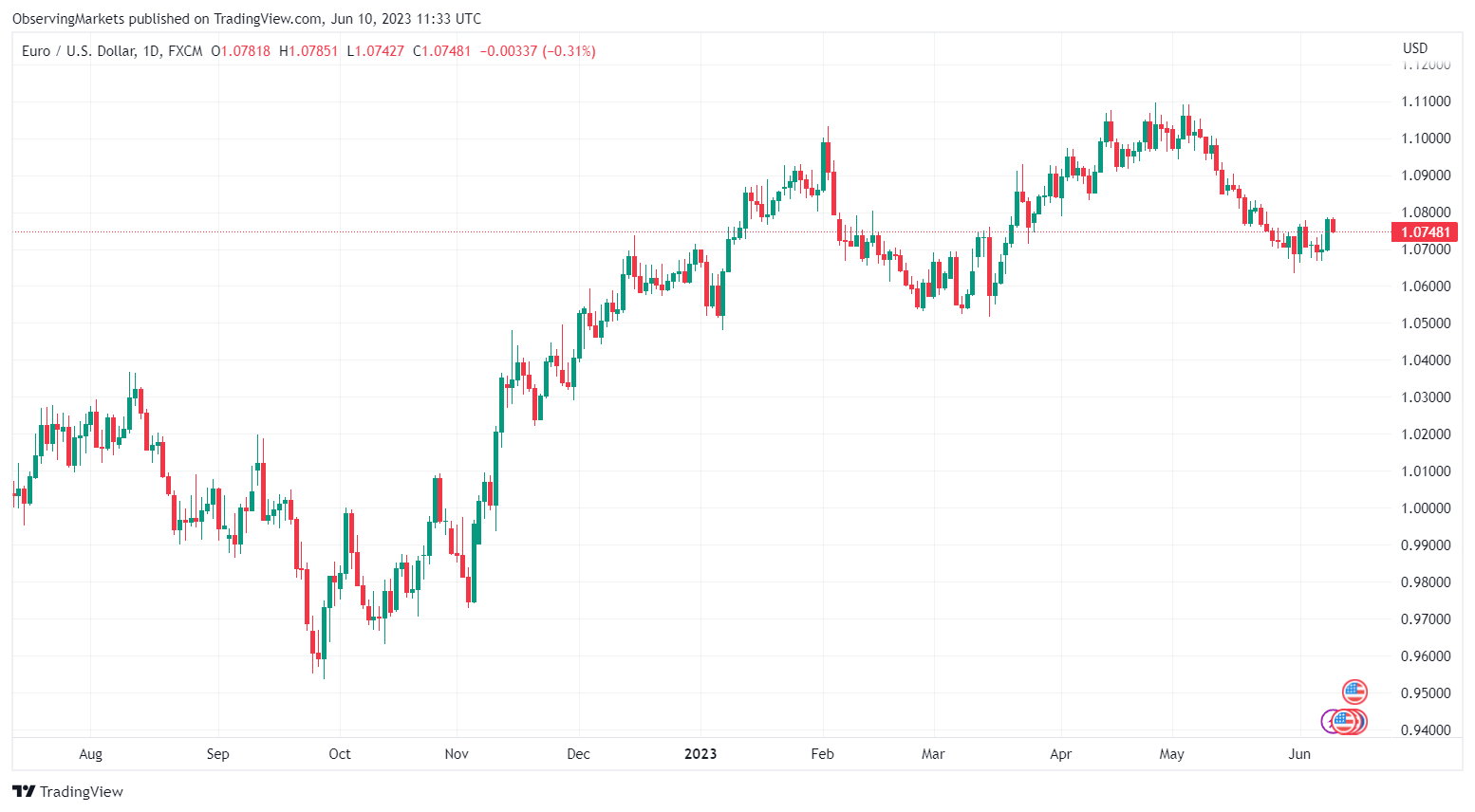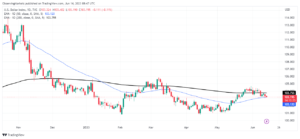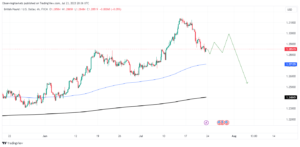
Despite the fact that the eurozone economy has entered a technical recession due to a larger-than-expected downward revision of Q1 GDP growth, the euro has gained ground against the US dollar, according to MUFG. In Q4 2022 and Q1 2023, the eurozone economy contracted by -0.1% for two consecutive quarters. Germany and Ireland contributed significantly to the downward revisions, which more than offset an upward revision for Italy.
Lower consumer and government spending, according to the report, were the primary detractors of Q1 growth. Household consumption fell by 0.3%, following a -1.0% drop in Q4, while government spending fell by 1.6% due to the cessation of Covid expenditures in Germany. Growth was also hampered by inventories, which reduced it by 0.4 percentage points.
Despite weaker-than-expected domestic demand, MUFG expects the European Central Bank (ECB) to stick to its plan of two 25bps rate hikes in June and July, raising the deposit rate to 3.75%. This is shared by the Eurozone rate market, which currently prices in about 25bps of hikes for next week’s policy meeting and 43bps of hikes by the July policy meeting.
According to MUFG, the recent slew of weaker Euro-zone activity and inflation data may prompt the ECB to lower its GDP and inflation forecasts for this year at its policy meeting next week. As a result, the EUR/USD has returned to the middle of this year’s trading range, between 1.0500 and 1.1000, as the pair struggles to find direction.
Separately, MUFG maintains a long AUD/NZD position (spot ref: 1.0870) in its TOTW portfolio, with a target at 1.1200, and a stop at 1.0700. “We are maintaining our long AUD/NZD trade idea to reflect expectations for narrowing policy divergence in the near-term between the RBA and RBNZ. The trade idea got off to a good start following the surprise decision by the RBA to hike rates this week,” MUFG notes.





